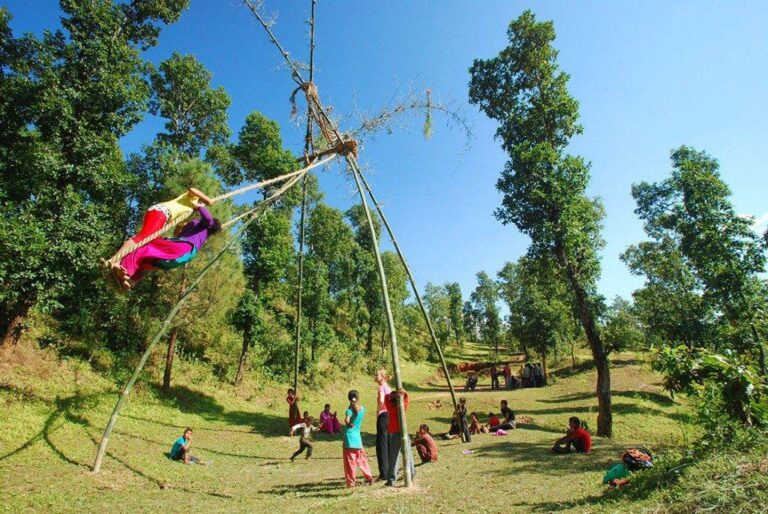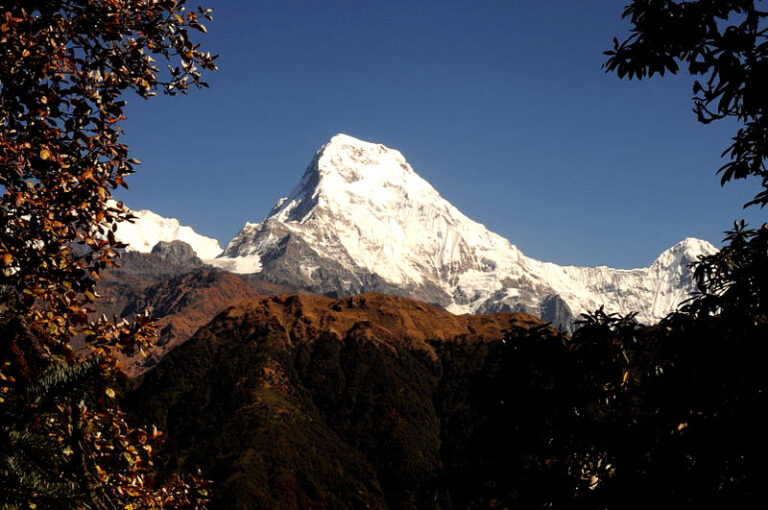Leave the road and modern cities for couples of days and discover different places that offers to see real nature views and culture diversities where local peoples are dwelling far from the modern life and preserving nature, traditions, culture and ethnicities.
Panchase trekking trail is one of the classic routes of Annapurna conservation area project; which is located in southern belt of the Dhaulagiri and Annapurna mountain ranges. The trekking trail commands to see spectacular view of Machhapuchhre, Hiuchuli, Mardi Himal, south Annapurna, Nilgiri, Gangapurna, Gurja peak, Annapurna fang, Barah shikhar, Lamjung Himal, Ganesh Himal and including some of the top ten mountains of the world called Annapurna first 8091 meters, Dhaulagiri 8163 meters and Manaslu 8167 meters high.
The Panchase trek begins nearby the Pokhara city and pass by many small villages which are inhabitant by the Magar, Dalit, Gurung, Brahmans and Chhetri. Most of the villagers are depending on the agriculture and animal husbandry so during the trekking period trekkers may enjoy with the cultivated paddy terraced field, farming style and rural life. Most of the time trekkers; walk through the small village,, farm and forest of rhododendron, Bamboo, Pine, chestnuts and sandalwood so can be seen some of the wild life such as monkey, deer, squirrel and many species of birds and butterflies. If trekkers are traveling in spring season then the region offers to see many kinds of blooming flowers specially; Rhododendron, magnolia, wild rose and orchids.
The Magar people
Magar people are one of the main ethnic group of Nepal and believe to have migrated from Tibet to Sikkim and Sikkim to Nepal same as other prominent groups of Nepal.According to the latest census of Nepal; Magar peoples are representing 7.13% of the total population of Nepal and living throughout the Nepal; especially Palpa, Arghakhachi, Gulmi, Gorkha, Tanahu, Myagdi and pyuthan district of Nepal. Magar people are devided into the two groups as barhra Magarats speaks Dhut dialect, eighteen Magar speaks pang and Kaike dialect.Magar people are practicing Buddhism (Theraveda) with a priest called Vikkhua and Wapa; the social process of sanskrization has drown some southern Magar population to develop a syncretic form of Hinduism that combines animist and Buddhist rituals.The original religions or beliefs of Magar people is Shamanism, Animism,Ancestor worship,Buddhism Theravada.The western Magar people practice Tibetan Mahayana Buddhism and shamanism(Bon) in which their priest is known as Lama Guru.






